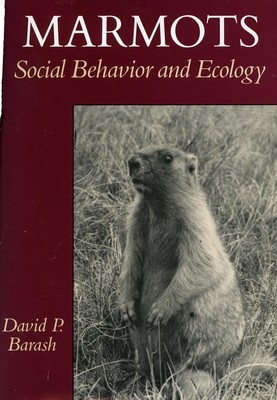
- We will send in 10–14 business days.
- Author: David P Barash
- Publisher: Stanford University Press
- ISBN-10: 0804715343
- ISBN-13: 9780804715348
- Format: 16.1 x 23.7 x 3.2 cm, kieti viršeliai
- Language: English
- SAVE -10% with code: EXTRA
Reviews
Description
In this book, based on over twenty years of study around the world, the author summarizes and synthesizes virtually everything that is known of the social behaviour and ecology of marmots. The organizing principle of the author's approach is evolution by natural selection - and thus, the degree to which the social behaviour of free-living animals can be interpreted as representing adaptations to particular environmental conditions. This book is essentially a single, widespread genus (genus Marmota comprising fourteen species found in North America and Eurasia. As such, it represents a productive union of theoretical insights from Darwinism and modern sociobiology, accompanied by a wealth of empirical data. Marmots are notable in that they constitute a relatively homogeneous group, made up of numerous species which greatly resemble each other. However, they occupy widely varying habitats - from temperate, lowland elevations to (more often) alpine meadows - and theory would predict behavioural adaptations to match their habitats.
EXTRA 10 % discount with code: EXTRA
The promotion ends in 23d.14:20:40
The discount code is valid when purchasing from 10 €. Discounts do not stack.
- Author: David P Barash
- Publisher: Stanford University Press
- ISBN-10: 0804715343
- ISBN-13: 9780804715348
- Format: 16.1 x 23.7 x 3.2 cm, kieti viršeliai
- Language: English English
In this book, based on over twenty years of study around the world, the author summarizes and synthesizes virtually everything that is known of the social behaviour and ecology of marmots. The organizing principle of the author's approach is evolution by natural selection - and thus, the degree to which the social behaviour of free-living animals can be interpreted as representing adaptations to particular environmental conditions. This book is essentially a single, widespread genus (genus Marmota comprising fourteen species found in North America and Eurasia. As such, it represents a productive union of theoretical insights from Darwinism and modern sociobiology, accompanied by a wealth of empirical data. Marmots are notable in that they constitute a relatively homogeneous group, made up of numerous species which greatly resemble each other. However, they occupy widely varying habitats - from temperate, lowland elevations to (more often) alpine meadows - and theory would predict behavioural adaptations to match their habitats.


Reviews